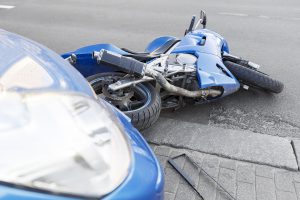Tampa Motorcyclist Identified As Victim In Fatal Crash
 Michael Babboni
Motorcycle Accidents
With Florida’s consistent warm and sunny weather, it is no wonder why Florida is such a popular place for motorcyclists everywhere. As wonderful as the feel of the wind in your hair and the freedom of a motorcycle is, it cannot be ignored that motorcycles are one of the most hazardous forms of motor vehicle transportation.
Michael Babboni
Motorcycle Accidents
With Florida’s consistent warm and sunny weather, it is no wonder why Florida is such a popular place for motorcyclists everywhere. As wonderful as the feel of the wind in your hair and the freedom of a motorcycle is, it cannot be ignored that motorcycles are one of the most hazardous forms of motor vehicle transportation.Fatal Crash On Courtney Campbell Causeway
The Tampa police have identified the motorcyclist who died in a fatal crash as 30 year old Sean Michael Kleingardner. When Kleingardner was riding his motorcycle in the eastbound lane, he ended up crashing into the back of a Saturn driven by Yoan Bienes-Betancourt. According to police, Bienes-Betancourt had only just turned into the Courtney Campbell causeway from an access road.
This caused Kleingardner to be thrown from the motorcycle. The Clearwater fire and police pronounced him dead at the scene. A passenger in Beines-Betancourt’s car had to be transported to St. Joseph’s Hospital in Tampa after they had complained of back and neck pain.
Both sides of the causeway had to be closed for four hours following the crash.
Motorcycle Fatalities
According to the National Highway Traffic Safety Administration, Florida has the most motorcycle fatalities in the nation. In fact, motorcycle accidents account for 19 percent of all motor vehicle fatalities. In 2013, more than 4,600 motorcyclists had been killed in an accident. Additionally, it was found that 88,000 more had been injured.
So why is riding a motorcycle so dangerous?
Firstly, with only 2 wheels on the ground, motorcycles are much more susceptible to hazards on the road than an average vehicle would be. For example, a pothole that may cause the car to slightly shake still has little effect on their ability to continue driving. For a motorcycle, there is not enough of a grip on the ground and so that little pothole is enough to cause the bike to become unbalanced and crash.
Secondly, motorcycles are not very easy to spot. This means that they will be a lot more vulnerable to other drivers who may not see them on the road until it is too late.
Thirdly, motorcyclists have way less protection than other motor vehicles. When a car crashes into another car, the car will act as a type of shield against the worst of the crash. However, motorcycles do not have this advantage. When a motorcycle is hit or hits another vehicle, there is little to nothing that is protecting you. That is, except your helmet and other safety gear.
Helmet Laws
Since the repeal of the helmet law, motorcycle fatalities in Florida have more than doubled. While helmet usage still remains a controversial issue among motorcyclists, it is a safety feature that should not be ignored.
The NHTSA has estimated that helmets have saved the lives of 1,630 motorcyclists in 2013 alone and that they could have saved at least 715 more if all motorcyclists had worn their helmets. In states without a helmet law, such as Florida, it was found that 59 percent of motorcyclists killed were not wearing their helmet as opposed to the 8 percent in states with helmet laws.
Basic Safety Tips For Motorcyclists
Always wear your safety gear – Yes, this means wearing your helmet along with gloves, jacket, and other protective gear. While it may feel like a hassle, this gear is the only thing that is coming between your body and the rough road during a crash.
Be visible to drivers and other motorcyclists – During dusk, night, or rainy weather make sure to keep your headlights, marker and taillights on. Try to also wear bright clothing or put reflective strips on your motorcycle in order to be more visible on the road.
Use common sense – Avoid any inherently dangerous behavior on the road. This means to avoid weaving between the lanes while riding, sticking to the speed limit at all times, using your signals, and leaving a decent amount of room between you and the other vehicles.
Get the proper training – Riding a motorcycle is not like driving a car or riding a bicycle. So unless you know what you are doing, you shouldn’t just hop onto the road with one. You can typically find a motorcycle safety course you can take and other classes that will allow you to get the experience you need within a safe environment.
